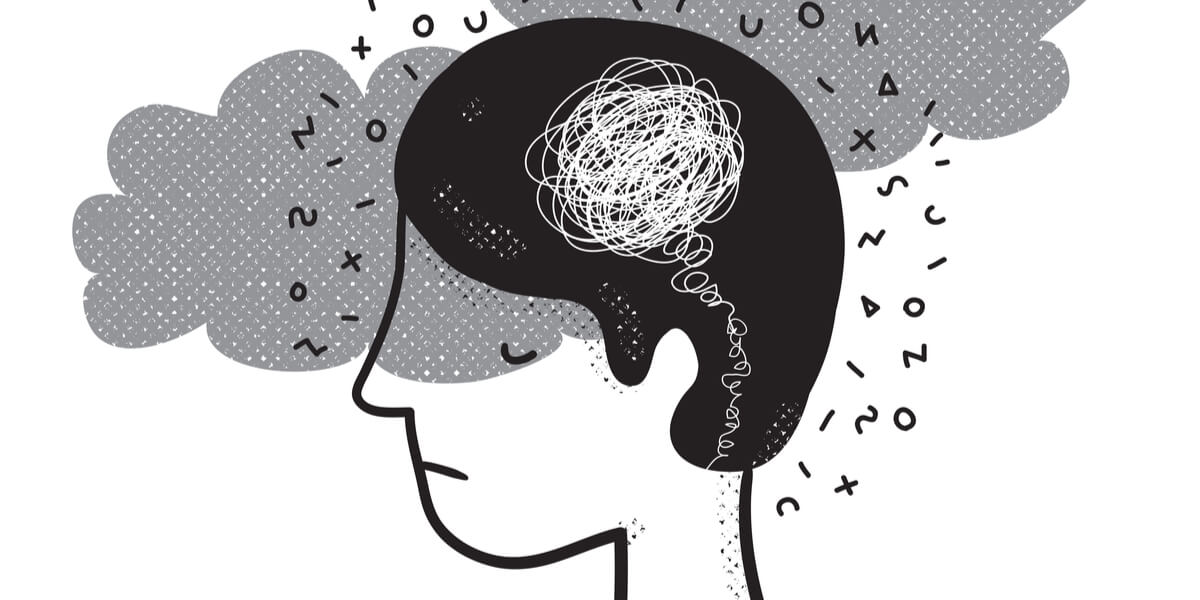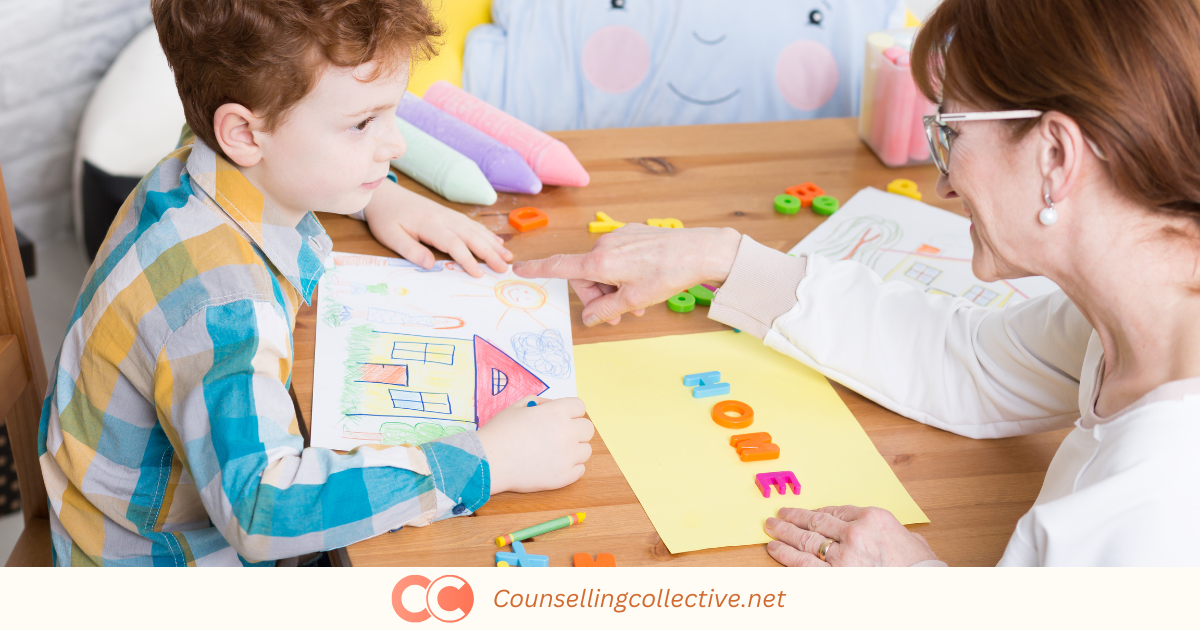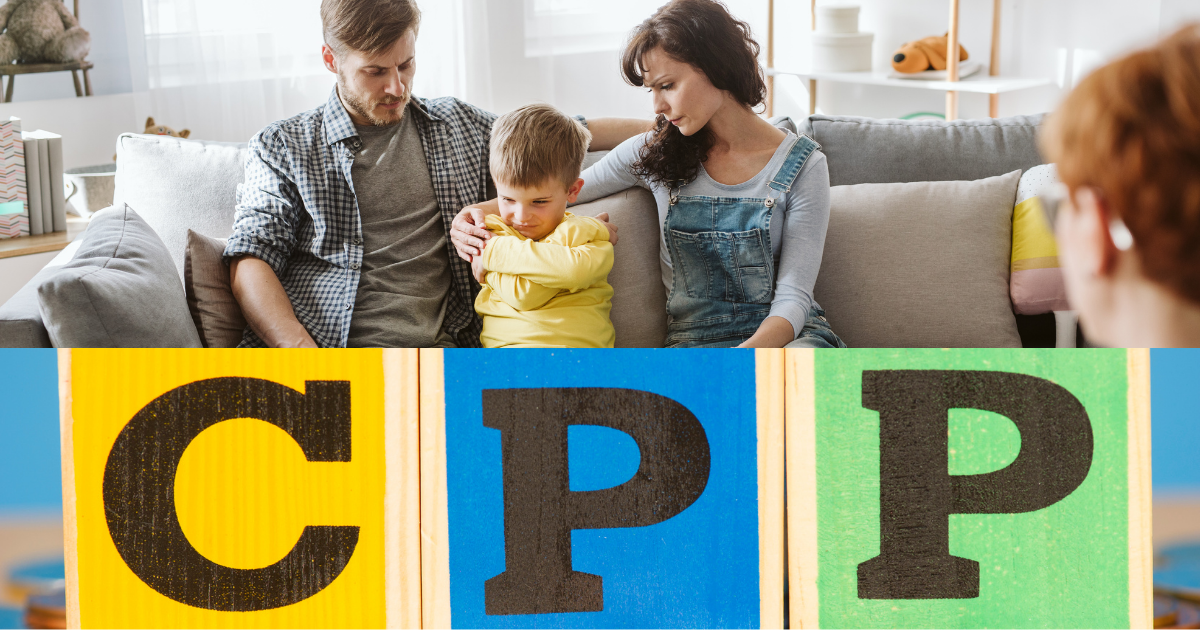Contents
- 1 Introduction
- 2 Understanding How Trauma-Focused Cognitive Behavioral Therapy Works
- 3 Applications of Trauma-Focused Cognitive Behavioral Therapy in Treating Mental Health Disorders
- 4 Common Myths of Trauma-Focused Cognitive Behavioral Therapy
- 5 Criticisms of Trauma-Focused Cognitive Behavioral Therapy (TF-CBT)
- 6 Conclusion
Introduction

Trauma-Focused Cognitive Behavioral Therapy (TF-CBT): Techniques, Applications, and Effectiveness
Trauma-Focused Cognitive Behavioral Therapy (TF-CBT) is a therapeutic model specifically designed to help individuals, particularly children and adolescents, recover from trauma and its effects. The therapy incorporates elements of cognitive-behavioral therapy (CBT) and trauma-specific interventions to address the emotional and psychological impact of traumatic experiences.
This article explores the foundational principles of TF-CBT, its core techniques, and practical applications, highlighting how the therapy addresses trauma-related challenges in individuals, particularly children and adolescents.
What is Trauma-Focused Cognitive Behavioral Therapy (TF-CBT)?
Trauma-Focused Cognitive Behavioral Therapy (TF-CBT) is a structured, short-term therapeutic approach designed to address the impact of trauma on children and adolescents. Developed by Dr. Judith Cohen, Dr. Anthony Mannarino, and Dr. Esther Deblinger, TF-CBT integrates cognitive-behavioral techniques with trauma-sensitive interventions to help individuals process and overcome traumatic experiences. TF-CBT aims to help individuals process trauma, reduce distressing symptoms, and develop coping skills to manage trauma-related challenges.
Why is TF-CBT Important?
TF-CBT is crucial because it provides a comprehensive approach to treating trauma, which can significantly affect mental health and daily functioning. By combining cognitive-behavioral strategies with trauma-sensitive interventions, TF-CBT helps individuals understand and process their traumatic experiences. This approach is particularly valuable for children and adolescents, who may struggle to cope with trauma and its impact. TF-CBT aims to improve emotional well-being, reduce trauma-related symptoms, and support healthy development and functioning.
Techniques Used In Trauma-Focused Cognitive Behavioral Therapy
- Relaxation Techniques: Techniques like deep breathing, progressive muscle relaxation, and guided imagery are taught to manage anxiety and stress. This helps clients with trauma-related anxiety disorders to regulate their emotional responses.
- Affective Modulation Skills: Training in recognizing and managing emotional triggers to improve emotional resilience. This technique is important for clients experiencing anxiety or depressive symptoms due to trauma, as it enhances emotional regulation.
- In Vivo Exposure: Gradual exposure to trauma reminders in a controlled setting helps clients face their fears, reduce avoidance behaviors, and manage distress associated with trauma. This technique is particularly useful for managing anxiety symptoms related to trauma.
- Psychoeducation: Educating clients and their caregivers about trauma and its effects helps normalize trauma responses and reduces anxiety. Understanding trauma is foundational for clients to engage effectively in therapy.
- Cognitive Restructuring: This technique involves identifying and challenging distorted or negative thoughts related to trauma. By modifying these harmful thought patterns, individuals can shift their perspective, reduce emotional distress, and improve their overall emotional well-being.
Trauma-Focused Interventions & Techniques
- Cognitive Restructuring: This technique focuses on identifying and challenging distorted or unhelpful thoughts related to the trauma. By restructuring these negative thought patterns, clients can alter their emotional responses and develop healthier, more balanced perspectives. This process helps in reducing feelings of guilt, shame, or fear associated with traumatic experiences.
- Narrative Exposure: Clients are guided to construct a detailed, coherent narrative of their traumatic experiences. This technique helps in making sense of the trauma and integrating it into their life story. By verbalizing and organizing their experiences, clients can reduce the emotional intensity and disruption caused by trauma-related memories.
- Safety Planning: This involves developing comprehensive strategies to enhance personal safety and prevent re-traumatization. Clients work on practical steps and safety measures, such as avoiding high-risk situations and creating emergency plans. This technique helps clients regain a sense of control and security, thereby reducing anxiety and fear associated with trauma.
- Parent/Caregiver Training: This technique involves educating and training parents or caregivers on how to support their child’s therapy process effectively. It includes teaching them about trauma, its effects, and how to reinforce therapeutic strategies at home. By creating a supportive and understanding environment, this approach enhances the overall treatment outcomes for the child.
Understanding How Trauma-Focused Cognitive Behavioral Therapy Works
Core Idea Trauma-Focused Cognitive Behavioral Therapy (TF-CBT) is a highly structured and evidence-based approach that integrates cognitive-behavioral techniques with specific interventions designed to address trauma. This therapeutic model is particularly effective for children and adolescents who have experienced traumatic events, such as abuse, violence, or loss, as well as for their families. The main goal of TF-CBT is to help individuals process and work through their traumatic experiences, thereby reducing trauma-related symptoms such as anxiety, depression, and post-traumatic stress disorder (PTSD).
Real-Life Example: Consider a child who has experienced a traumatic event, such as witnessing domestic violence or surviving a natural disaster. This child might participate in TF-CBT sessions where they engage in various therapeutic activities, such as trauma narrative development, relaxation exercises, and cognitive restructuring. These interventions help the child gradually process their traumatic memories in a safe and supportive environment.
Critical Concepts
- Trauma Processing: TF-CBT helps individuals process and make sense of their traumatic experiences. This involves discussing the trauma in a safe environment, understanding its impact, and integrating the experience into their life narrative. Trauma processing aims to reduce the emotional charge associated with the trauma and promote healing. Clients are encouraged to express their thoughts and feelings about the trauma, which helps in normalizing their experiences. Over time, this process allows individuals to regain a sense of control and safety in their lives.
- Cognitive Restructuring: The therapy includes techniques to challenge and change negative or distorted thoughts related to the trauma. By identifying and reframing these thoughts, individuals can reduce anxiety and other distressing symptoms and develop a more balanced perspective on the trauma. This approach helps in breaking the cycle of negative thinking patterns that can exacerbate trauma-related distress. It empowers individuals to replace these thoughts with more constructive and positive beliefs, which contributes to better mental health outcomes.
- Skill-Building: TF-CBT incorporates skill-building exercises to help individuals develop effective coping strategies. These skills include relaxation techniques, problem-solving, and emotional regulation, which are essential for managing trauma-related symptoms and improving overall functioning. Clients learn practical methods for calming their minds and bodies, which is crucial in moments of distress.
Notable Figures in Trauma-Focused Cognitive Behavioral Therapy
Judith Cohen: A key developer of TF-CBT, Judith Cohen has contributed significantly to the development and implementation of the therapy. Her work has been instrumental in shaping TF-CBT as an effective approach for treating trauma in children and adolescents.
Anthony Mannarino: Co-developer of TF-CBT, Anthony Mannarino has played a vital role in advancing the therapy’s research and application. His contributions include refining TF-CBT techniques and expanding its use in various clinical settings.
Esther Deblinger: A co-developer of TF-CBT, Esther Deblinger has contributed to the therapy’s development and dissemination. Her work focuses on adapting TF-CBT for specific populations and enhancing its effectiveness in treating trauma.
Judith Cohen- Image Source: pma.caltech.edu

Theories Influenced by Trauma-Focused Cognitive Behavioral Therapy
- Cognitive Behavioral Therapy (CBT): TF-CBT builds on core CBT principles, specifically applying them to trauma treatment by integrating trauma-specific techniques. It emphasizes the connection between thoughts, feelings, and behaviors, tailoring these concepts to address trauma responses. This approach helps clients change unhelpful thinking patterns and develop healthier coping mechanisms in the context of trauma.
- Dialectical Behavior Therapy (DBT): Incorporates TF-CBT’s skill-building components, such as emotion regulation and distress tolerance, especially in treating trauma-related conditions. DBT also integrates mindfulness and acceptance strategies, which complement TF-CBT’s cognitive restructuring methods.
- Eye Movement Desensitization and Reprocessing (EMDR): Utilizes TF-CBT’s trauma narrative approach, incorporating cognitive restructuring during reprocessing traumatic memories. EMDR shares the goal of reducing the emotional distress linked to traumatic memories by promoting adaptive information processing.
- Acceptance and Commitment Therapy (ACT): Combines TF-CBT’s emphasis on cognitive restructuring with values-based living to manage trauma-related symptoms. ACT encourages clients to accept difficult thoughts and emotions related to trauma without avoidance, aligning with TF-CBT’s goal of confronting traumatic experiences.
- Person-Centered Therapy: Integrates TF-CBT’s structured yet empathetic approach to creating a safe therapeutic environment for trauma processing. It emphasizes unconditional positive regard and empathy, which are crucial when working with trauma survivors.
Applications of Trauma-Focused Cognitive Behavioral Therapy in Treating Mental Health Disorders

Depression
TF-CBT can help manage depression by addressing trauma-related symptoms and improving coping strategies. By processing traumatic experiences and challenging negative thoughts, individuals can reduce depressive symptoms and improve emotional well-being.
Example: A client experiencing depression related to past trauma might benefit from TF-CBT techniques such as cognitive restructuring to challenge and change negative thought patterns, and narrative exposure to process traumatic memories. These techniques help in addressing trauma-related symptoms and developing effective coping strategies, leading to reduced depressive symptoms and improved emotional well-being.
Image Source: neurosciencenews.com

Anxiety Disorders
TF-CBT addresses anxiety by targeting trauma-related distress and promoting effective coping strategies. This approach helps individuals manage anxiety symptoms and develop a more balanced perspective on their trauma.
Example: A client with anxiety due to trauma might benefit from TF-CBT techniques such as cognitive restructuring and relaxation exercises to manage anxiety and improve emotional resilience.
Image Source: hindustantimes.com

PTSD
TF-CBT is specifically designed to address PTSD symptoms by processing traumatic memories and reducing distressing symptoms. The therapy helps individuals understand and cope with their trauma, leading to improved functioning and emotional health.
Example: A client with PTSD might use TF-CBT to process their traumatic experiences, challenge trauma-related beliefs, and develop coping strategies, resulting in significant improvements in PTSD symptoms.
Image Source: mindfulinfusions.com
Common Myths of Trauma-Focused Cognitive Behavioral Therapy
| Myth | Reality |
| TF-CBT is only for children. | While TF-CBT is primarily designed for children and adolescents, it has been adapted successfully for adults who have experienced trauma. The principles and techniques of TF-CBT can be applied across different age groups. |
| TF-CBT requires the client to relive their trauma in detail. | TF-CBT involves discussing trauma in a controlled and supportive way, but it focuses more on understanding the impact and processing emotions rather than reliving every detail. The goal is to reduce the emotional distress associated with the trauma, not to retraumatize the client. |
| TF-CBT is a one-size-fits-all approach. | TF-CBT is highly flexible and tailored to each client’s specific needs, trauma history, and developmental level. Therapists adjust the techniques and pace of the therapy based on the client’s comfort and progress. |
| Only therapists trained in TF-CBT can use its techniques. | While specialized training in TF-CBT is beneficial, many of its core techniques, such as cognitive restructuring and relaxation training, are common in other therapeutic modalities and can be applied by trained mental health professionals. |
Criticisms of Trauma-Focused Cognitive Behavioral Therapy (TF-CBT)
- Complexity and Time Commitment: TF-CBT involves a structured program with multiple sessions and a variety of techniques, including cognitive restructuring, trauma narrative work, and skill-building exercises. The complexity and time commitment required can be challenging for some individuals, particularly those with busy schedules, limited resources, or other constraints. The therapy typically spans 12 to 20 sessions, which may not be feasible for everyone without adequate support and planning.
- Limited Focus on Other Psychological Issues: While TF-CBT is highly effective for addressing trauma-related symptoms such as PTSD, anxiety, and depression, it may not comprehensively address other psychological issues like substance abuse, severe personality disorders, or chronic relational problems. Clients with reoccurring mental health disorders may need additional therapeutic approaches or supplementary interventions to ensure holistic and integrated treatment.
- Dependence on Participant Engagement: The success of TF-CBT relies heavily on active and consistent participation from individuals, including completing homework assignments, engaging in trauma processing, and practicing coping skills. Engagement and motivation are crucial for the therapy’s effectiveness, which can be a barrier for some clients, especially those who are resistant, have difficulty discussing trauma, or lack social support outside therapy sessions..
Conclusion
Trauma-Focused Cognitive Behavioral Therapy (TF-CBT) presents a structured and evidence-based approach for addressing trauma and its profound effects on children and adolescents. By integrating cognitive-behavioral techniques with trauma-specific interventions, TF-CBT provides a comprehensive framework that helps individuals process and make sense of traumatic experiences. It is designed to reduce distressing symptoms, such as anxiety and PTSD, while fostering the development of effective coping strategies and emotional resilience. The adaptability of TF-CBT, combined with its demonstrated success across various settings and populations, underscores its value as a powerful tool for treating trauma and enhancing overall emotional well-being. Its focus on both individual and familial aspects of trauma makes it a versatile and impactful option for those seeking recovery and support.
References
- Cohen, J. A., Mannarino, A. P., & Deblinger, E. (2017). Trauma-Focused Cognitive Behavioral Therapy for children and adolescents: Treatment applications. Guilford Press.
- Cohen, J. A., Mannarino, A. P., & Deblinger, E. (2006). Treating trauma and traumatic grief in children and adolescents. Guilford Press.
- Foa, E. B., Hembree, E. A., & Rothbaum, B. O. (2007). Prolonged exposure therapy for PTSD: Emotional processing of traumatic experiences: Therapist guide. Oxford University Press.
- Ford, J. D., & Courtois, C. A. (Eds.). (2013). Treating complex traumatic stress disorders: An evidence-based guide. Guilford Press.
- Hayward, R. D., & Tolin, D. F. (2020). Trauma-focused cognitive-behavioral therapy for post-traumatic stress disorder in children and adolescents. Cochrane Database of Systematic Reviews, 2020(6), CD003388.
- McLean, C. P., & Foa, E. B. (2013). Prolonged exposure therapy for posttraumatic stress disorder: A review of the treatment and its effects. Current Directions in Psychological Science, 22(1), 55-60.
- National Institute for Health and Care Excellence (NICE). (2018). Post-traumatic stress disorder (PTSD): Management. NICE guideline [NG116].
- Shapiro, F. (2017). Eye Movement Desensitization and Reprocessing (EMDR) therapy: Basic principles, protocols, and procedures. Guilford Press.
- Tolin, D. F., & Foa, E. B. (2006). Assessing the efficacy of trauma-focused cognitive-behavioral therapy: A meta-analysis. Psychological Bulletin, 132(5), 628-654.
Explore more Theories & Therapies








